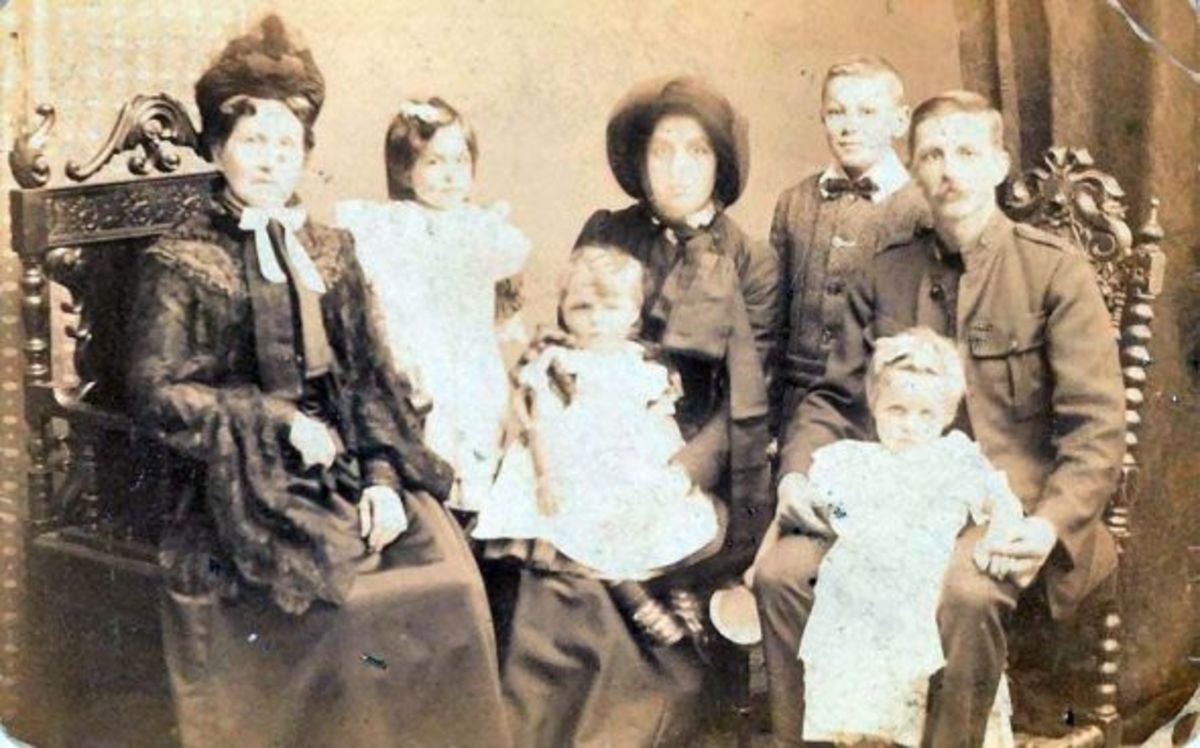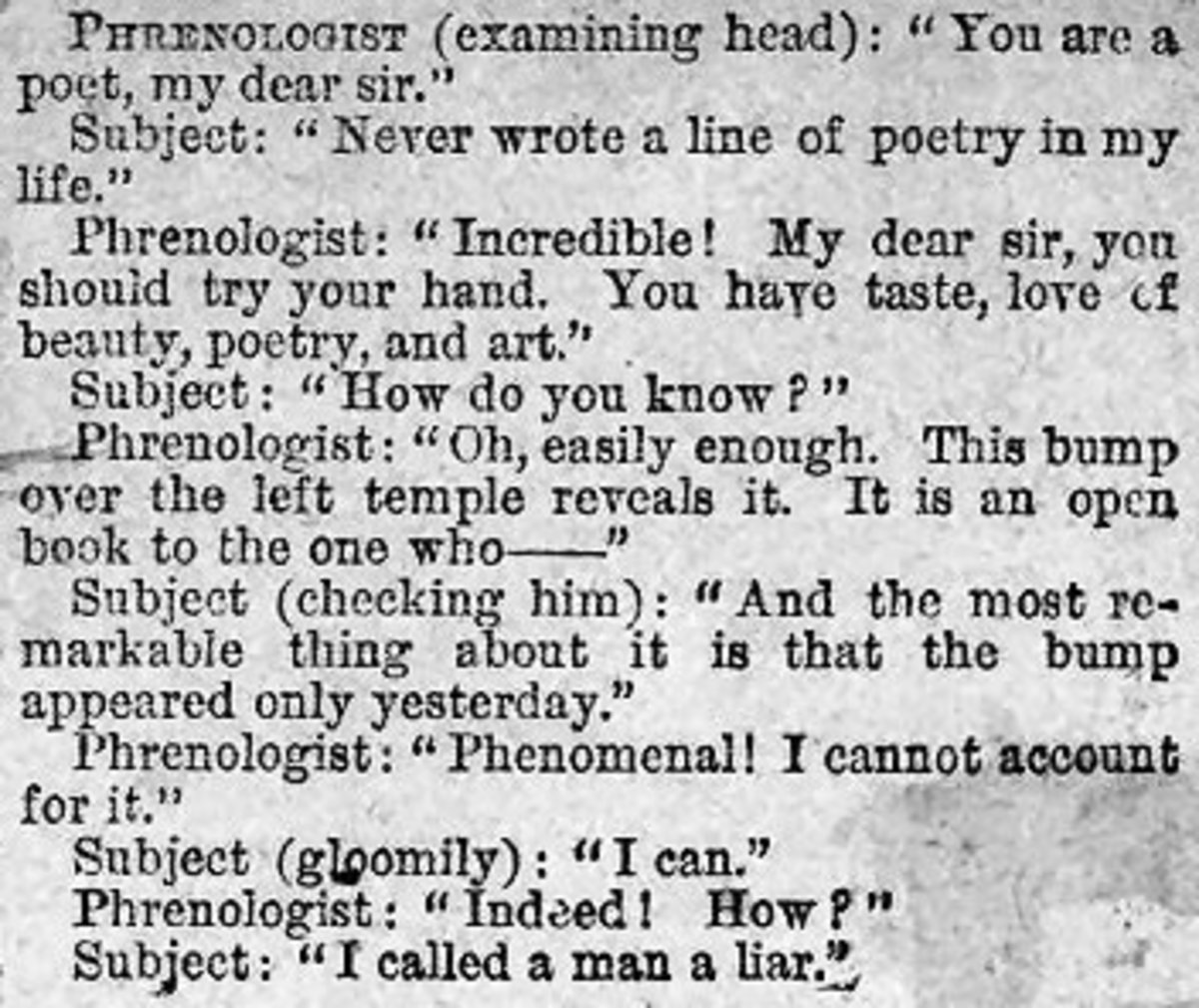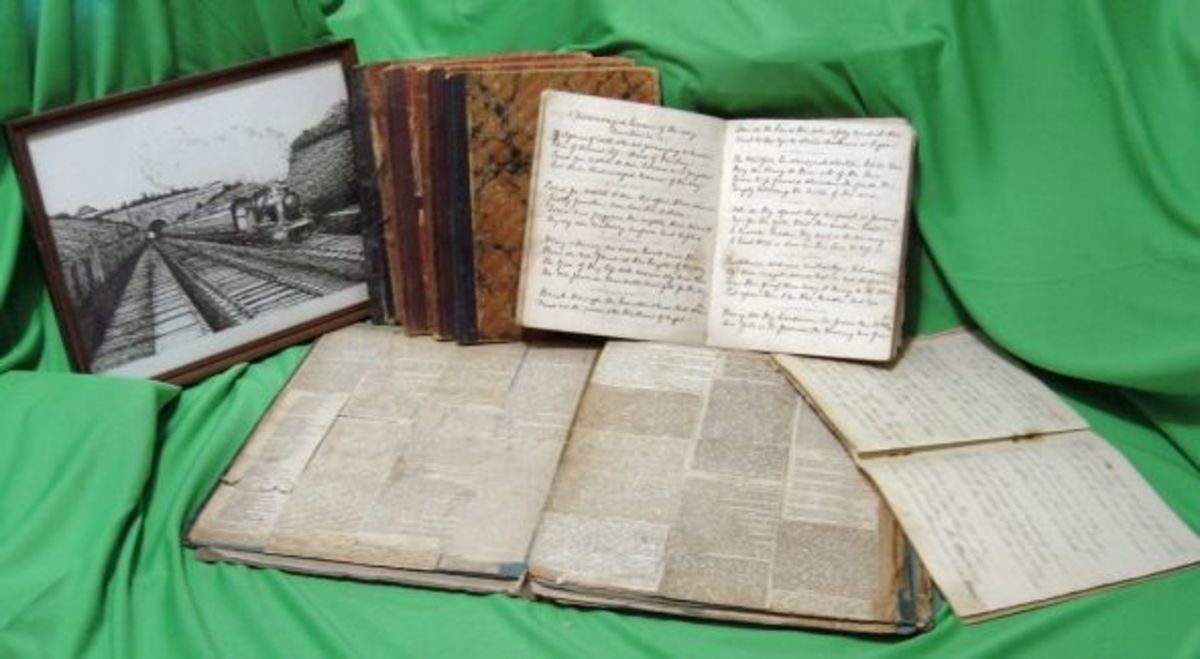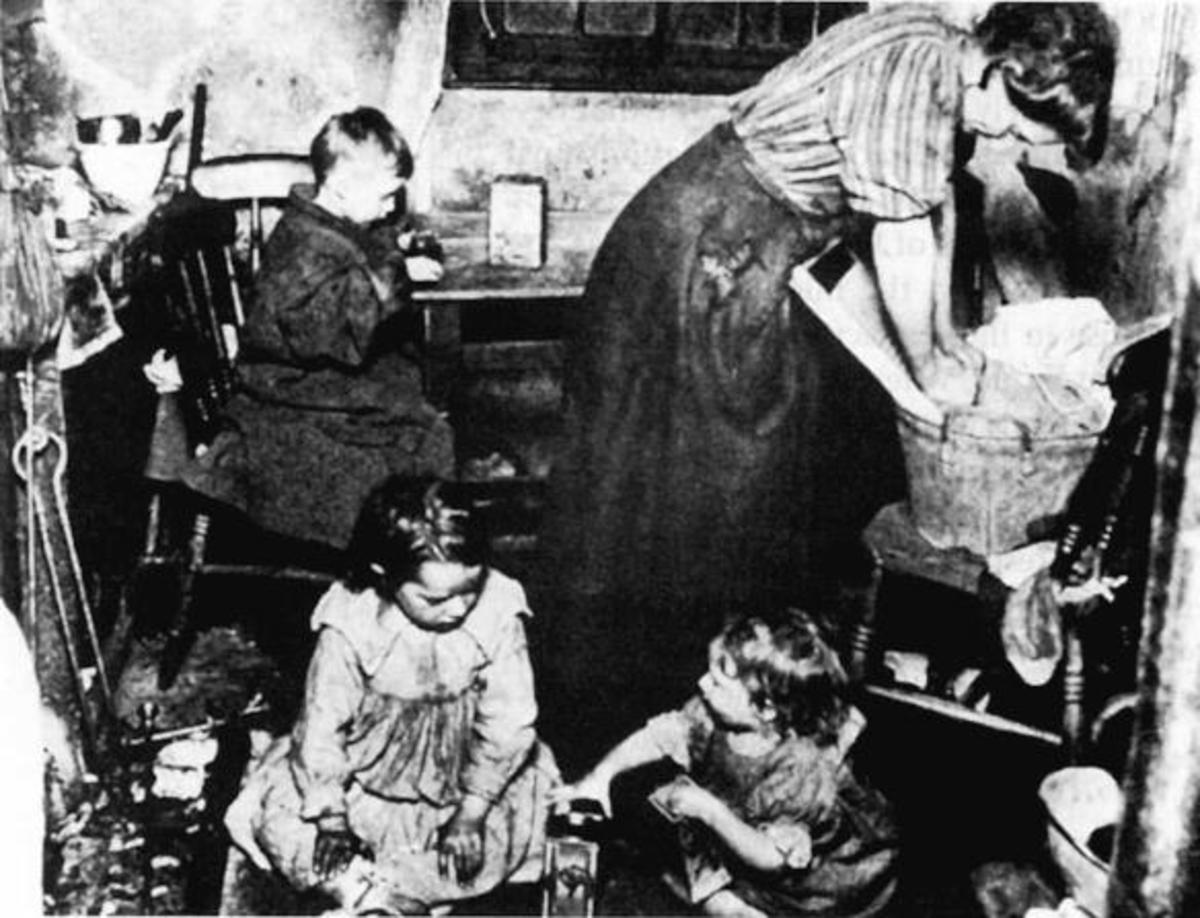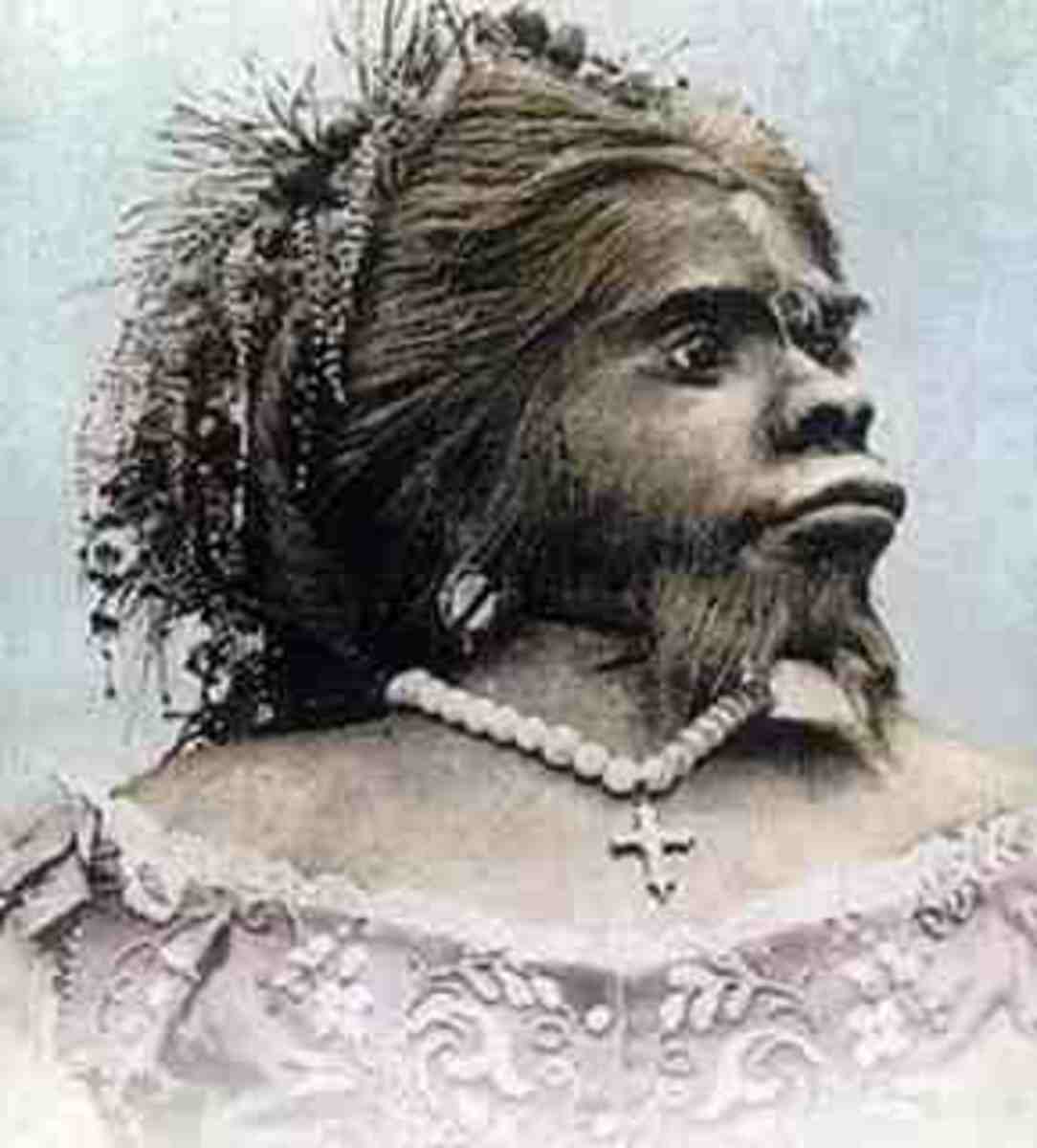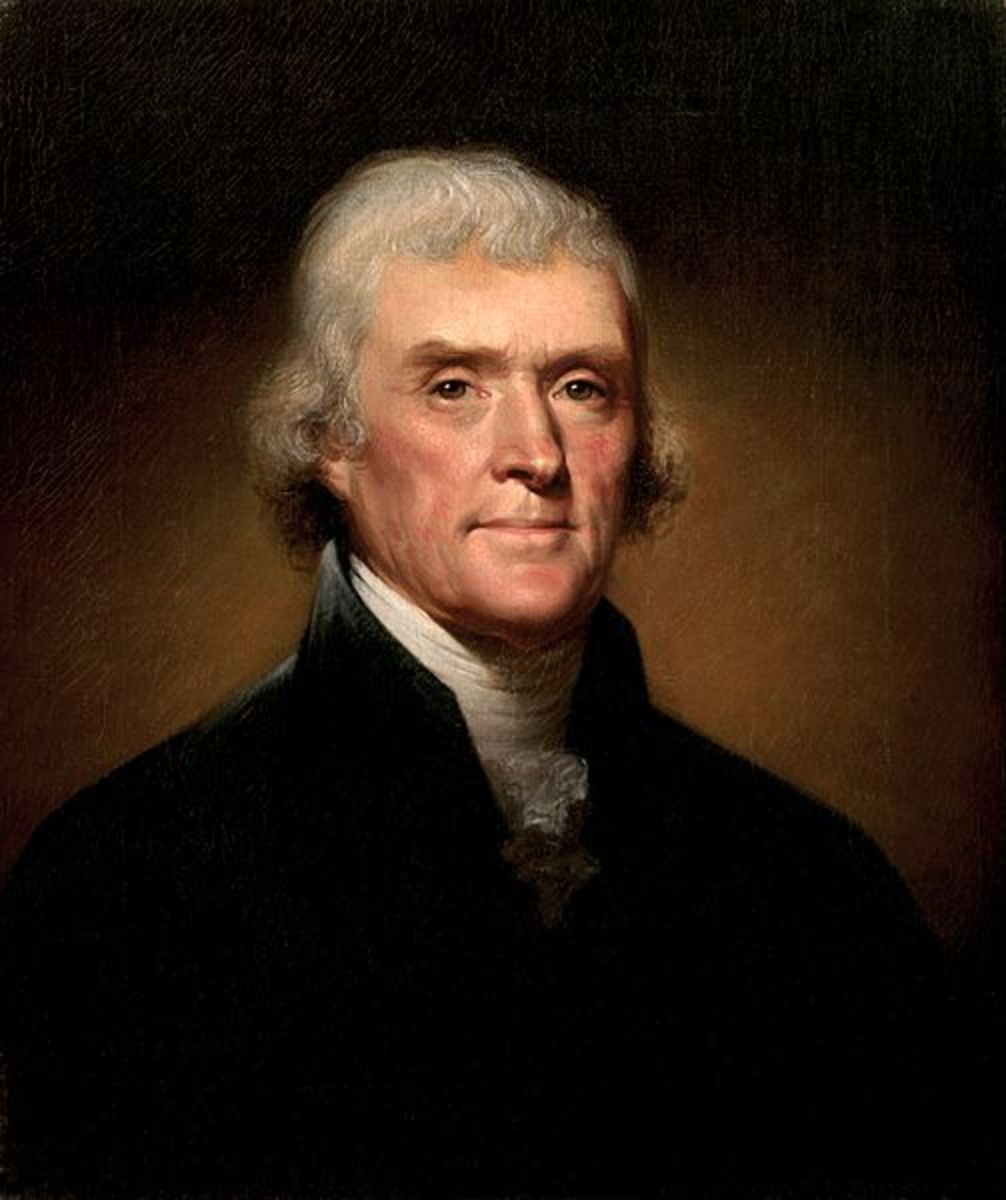- HubPages»
- Education and Science»
- History & Archaeology»
- History of the Modern Era
Victorian Take of Nature: Portrayed by 4 Victorian Newspaper Stories
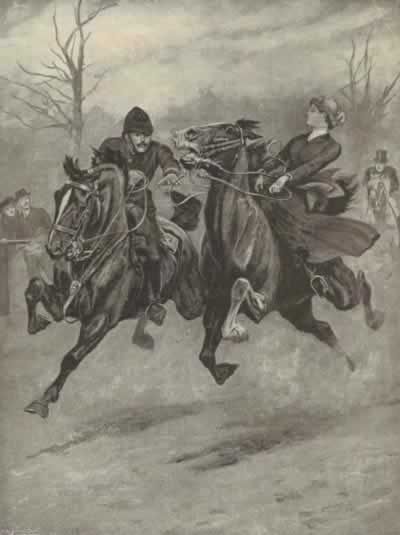
Nature and Wildlife Under the Microscope
In the Victorian Era
A review of newspaper articles published in the Victorian era, plus video footage of late Victorian farm animals at Home Farm, Beamish (A living museum). They're not up to National Geographical or David Attenborough's standards of reporting but they give a personal insight into how Victorians viewed and reported on wildlife and events in nature, especially the touching story of the Wren who lost his mate.
These are just a few newspaper articles selected from the Scrapbook of Victorian Newspapers compiled by my great-great grandfather, George Burgess (1829-1905) during his working life in America and England.
More 19th century articles on wildlife and nature is available for free viewing in the Victorian scrapbook of newspaper articles on my Nathanville genealogy website; link below.
Happy Reading, and May the Forces of Nature be with you.
Contents
This article starts with a video of Home Farm at Beamish (A living museum), depicting a typical Victorian Farmstead in Victorian Britain. Followed by four 19th century newspaper articles on the growing interest of Nature in the Victorian era; the four articles covered here being:-
- An Exodus of Frogs from a swamp in New South Wales, Australia
- The cure of blindness in an Indian elephant with the application of Nitrate of silver to the eyes
- A touching story of a Wren who lost his mate, and
- The oldest and largest oak trees in England.

A living Museum at Home Farm, Beamish
Late Victorian to Early Edwardian Farm Life
I made this short video of a typical Victorian Farmstead while visiting Beamish, a living museum recreating life in Northern England as it would have been from the late Georgian era in the 18th century to early Edwardian period.
Locaton of Beamish
Home Farm, a Victorian farmstead is just one of the many features to visit at Beamish; a fantastic living museum of times past in northern England.
An Exodus of Frogs
Shame the Video Camera Hadn't Yet Been Invented!
Published in the Pastoral Times, the Hay, referred to in the first line of the newspaper article below, is a small town on the south western corner of New South Wales, Australia. The Pastoral Times is an Australian newspaper that was in regular publication under that name from 1861 until 1995; now known as the Deniliquin Pastoral Times and published in Deniliquin, New South Wales, Australia.
This article is an eye-witness account of a shepherd on the plains near Hay, New South Wales, Australia who waking from his slumbers under a gum tree saw hundreds of thousands of frogs making an exodus from what was a clayey swamp, which had become bone dry due to a long a severe drought, and heading towards Murrumbidgee which was about 12 million acres of land (about 18,919 square miles) with the Murrumbidgee River running through it. In the mid-19th century the population was a little over 1100 human inhabitants (1139 in 1841) with by 1852 400,000 sheep, 100,000 cattle and 3,000 horses. So perhaps, in times of prolonged drought, the migration to the large Murrumbidgee River from Hay in New South Wales was irresistible and therefore would no doubt account for such a large exodus of frogs from a dried-up and parched clayey swamp.
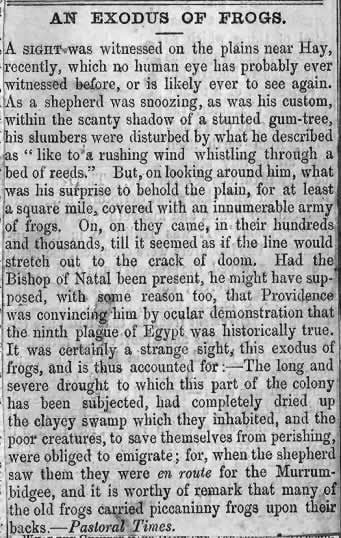
An Indian Elephant
19th Century Veterinary Care
The newspaper article below is an account of the Rev. Daniel Wilson (1778-1858), born in London and an English Bishop of Calcutta, India. The article is based on a letter written by him in India back to his family in England of an event he witnessed whereby blindness in an Indian Elephant was cured with the application of Nitrate of silver applied to the eyes over several days.
It has been known for a long time that silver nitrates have antiseptic properties and before the development and wide use of antibiotics in the 20th century silver nitrates were frequently used for medical treatment, including as eye drops in humans; although incorrect dosage could cause blindness.
What makes this article interesting is that it is based on the medical practice before 1858 (when Daniel Wilson died) of using silver nitrate in humans to successfully fight eye infections; whereas a quick search on the web on the medical use of Nitrate of silver tributes Carl Siegmund Franz Cred (1819-1892) for introducing it in the 1880s (some 30 years after the accounts written by the Rev. Daniel Wilson) as an effective antiseptic eye drop in new-borns for the prevention of Neonatal conjunctivitis. I guess a good example of where knowledge is built on knowledge and where good practices are developed and enhanced overtime; although in reading the Wikipedia articles you would get the impression that all the credit should go to Carl Crede and not be shared with the works of his predecessors.
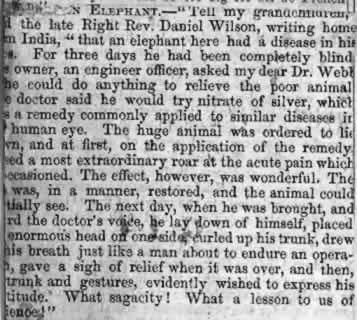
The Wren Who Lost His Mate
A Rather Touching Story
This touching story below, published in a 19th century newspaper (probably American), is apparently based on an account given by Alexander Wilson (1766-1813) who (born in Scotland) was a founding father of American Ornithology and was at the time regarded as one of the greatest American ornithologists.
This newspaper article is based on the observation by Alexander Wilson of how a wren responds to the tragic loss of his mate; being oblivious to her fate. It tells the story of how for the first day the wren calls and calls for his mate but to no avail, and in the absence of any response disappears for the best part of a day before returning the following afternoon with a new mate with whom he successfully raises a brood of seven young.
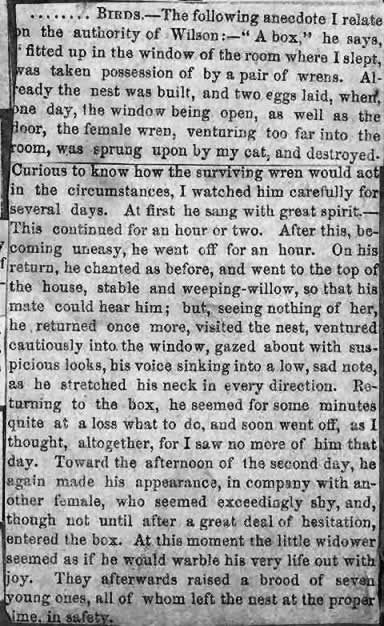
Old Oak Trees
The Oldest and Largest Oak Trees in Victorian England
This article written by The Half holiday, a very popular British Victorian comic magazine (in publication from 1884 to 1916) commonly known as Ally Sloper’s Half Holiday; it consisted of eight pages and sold for one penny. The magazine featured on its front page the comic character of Ally Sloper as a Victorian layabout avoiding his landlord and other creditors by loitering on the streets of Victorian Britain. Although a comic magazine ‘The Half Holiday’ also included prose and other short articles including this one on old oak trees in England, which was subsequently re-published in a more conventional newspaper and credited the ‘The Half Holiday’ as the source. Recycling stories from previous publications in newspapers and magazine was a common worldwide practice in the 19th century as ‘fillers’ to fill up space in newspapers.
Although first published in a comic magazine this is quite an educational article which gives some useful historical information of the size, age and location of some of the largest and oldest oak trees in England; presumably during the latter part of the 19th century e.g. sometime after 1884. I say presumably after 1884, when the Half Holiday first went into publication, in that in the 19th century it wasn’t uncommon for newspaper articles of this nature to be regurgitated from old and out of date information rather than bringing it up to date with the latest information. Nevertheless it’s still an informative article in that it identifies the oldest oak tree in England at that time as standing in the park belong to the Duke of Portland in London. It describes an oak tree at Welbeck Abbey in Nottinghamshire, the Greendale Oak through which apparently a coach road is cut; the article finishing with mention of the Cathorpe Oak in Yorkshire, which at the time is noted as being the largest oak in England.
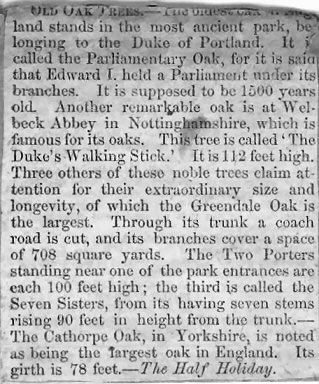
These and Other Newspaper Articles of the Same Period
Free to View
Below is the link to 500 Victorian newspaper articles on my Nathanville Genealogy website, from the Scrapbook by George Burgess, which can be viewed free.
- Victorian newspapers on Nature
A Victorian Scrapbook of Newspaper Articles on Victorian science and nature by George Burgess (1829-1905)
Nature Be With You Poll
A Victorian Take on Nature
Shame the video camera hadn't been invented. Nevertheless, having read the above Victorian newspaper articles on 'Animals and Nature', do you have a favourite?
My favourite Victorian newspaper article on nature?
This content is accurate and true to the best of the author’s knowledge and is not meant to substitute for formal and individualized advice from a qualified professional.
© 2011 Arthur Russ


